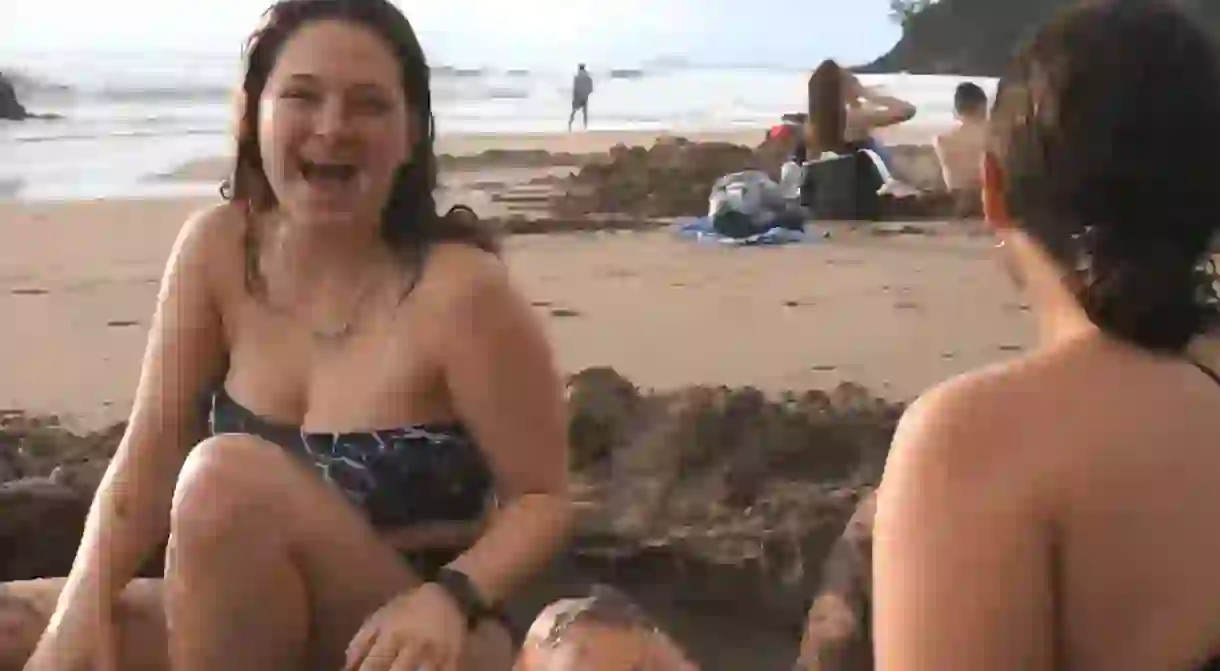Exploring the Hot Water Beach of the Coromandel, New Zealand

Not many beaches are at their most satisfying on a cool day, but Hot Water Beach is not your average seaside attraction. This stretch of sand on New Zealand’s North Island has its own hot springs, which produce water of up to 64°C. That means that if you time it right – and dig deep enough – you can wallow in your own warm beachside bath.
Hot Water Beach’s unique waters are best experienced two hours either side of low tide, when the stretch that the springs bubble up through is exposed. The rest of the time the waves wash over any hot pools.

You won’t be alone – while Hot Water Beach can be deserted outside of these peak times, when the springs are bubbling in the daytime, visitors from New Zealand and beyond flock here, methodically digging their own baths before lying back and enjoying the sea views.
A guide to Hot Water Beach
Hot Water Beach is on the eastern side of the Coromandel Peninsula, around two hours and 30 minutes’ drive east of Auckland. There are several car parks, and buses run from Auckland as well as the nearby villages of Whenuakite and Hahei.
The north side of the beach is popular with surfers, and offers one of the best breaks on the peninsula. The rest of Hot Water Beach is mostly used by beach goers looking to wallow. Many visitors bring their own buckets and spades, but if you don’t have any, you can rent them at the beach’s cafés. Circular baths lined with walls of excavated sand are the most common construction, and some ambitious diggers build channels to the ocean so the hot spring water mixes with the cooler sea.
It’s an appealing spot, backed by woods, with rocks poking out of the sea. The springs rise up opposite the rocks. Once you’ve dug in and are feeling the warmth on your skin, it can feel idyllic, but it’s worth taking stock before heading into the sea, since waves can be large and there are rip currents – signs along the beach give guidance.
Other activites on Hot Water Beach
As well as surfing and bathing, there’s history to explore. This was an area of early settlement for Māori explorers from Polynesia, and artefacts including axes, fish hooks and ornaments have been found in the vicinity. On the headland, the remains of old trenches – part of the defences of a fortified village – can be seen, while a rock just north of the hot pools was used for sharpening tools.
Just south of the beach (and the main parking area) are a couple of cafés, an art gallery and a holiday park offering surf rental and buckets and spades. Moko Artspace has art, sculpture and jewellery with Māori influences, the Top 10 Holiday Park offers villas and camping spots, while Hot Waves and Hotties have a good range of snacks and more substantial meals.
Exploring the Coromandel Peninsula
The Coromandel is hilly and heavily forested, meaning that much of it – despite its proximity to Auckland and the Bay of Plenty city of Tauranga – has a wild, isolated feel. The coast has more of a buzz, and not far from Hot Water Beach you’ll find idyllic white-sand beaches popular with day-trippers. To the north, Cathedral Cove has unique rock formations including an enormous stone arch, and is a great place to hike, snorkel or sea kayak.
To explore deeper, you can hike the peninsula’s mountainous spine on numerous walking trails, or explore its tip on the famous Coromandel Walkway. To the west are historic gold-mining towns and wetlands, while the region’s alternative spirit and foodie focus is visible all over, from spiritual retreats to farmers’ markets.There’s more inspiration right here.
Looking for a place to stay? Discover these top places in Coromandel and book now on Culture Trip.













